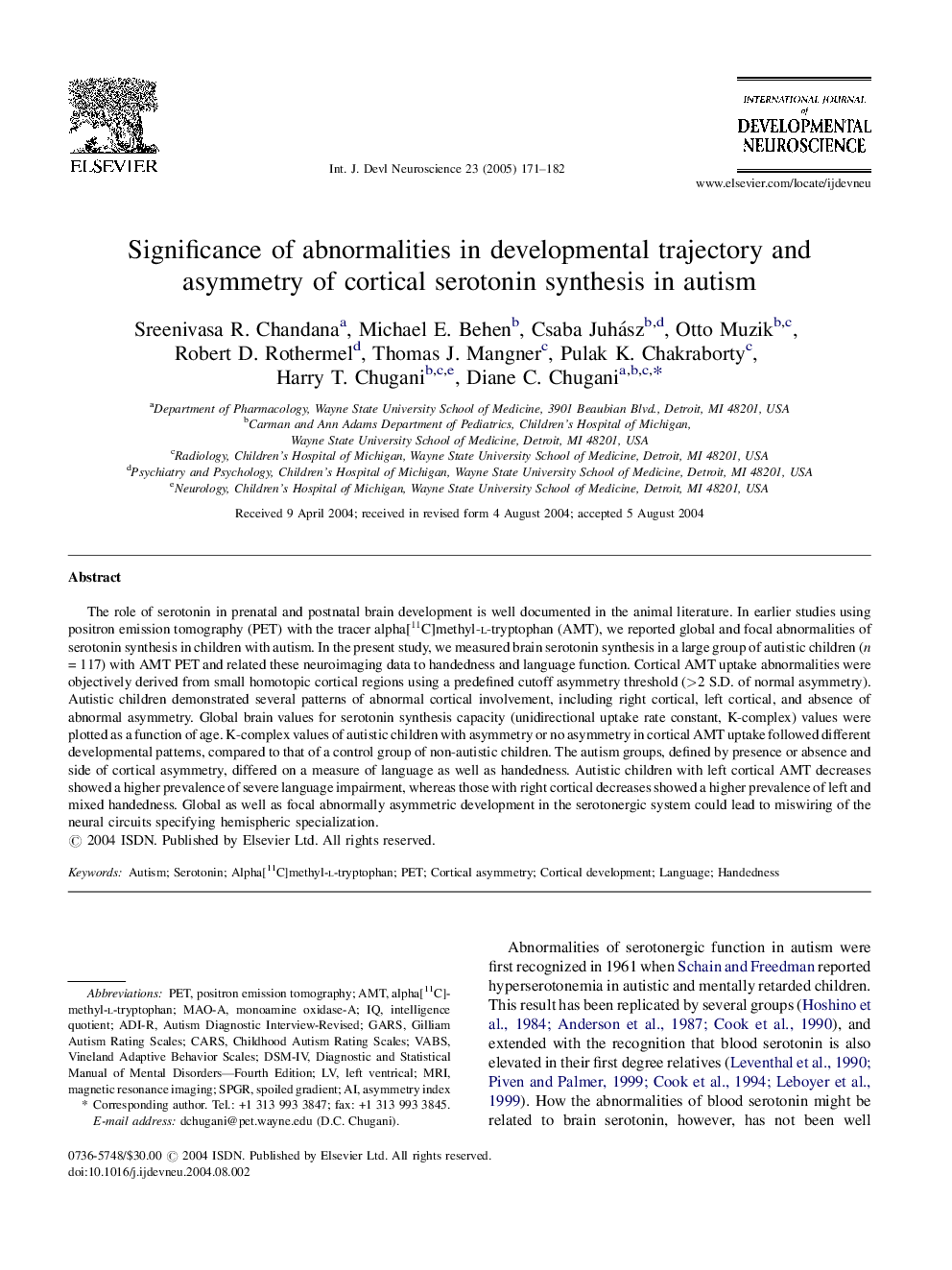| Article ID | Journal | Published Year | Pages | File Type |
|---|---|---|---|---|
| 9933598 | International Journal of Developmental Neuroscience | 2005 | 12 Pages |
Abstract
The role of serotonin in prenatal and postnatal brain development is well documented in the animal literature. In earlier studies using positron emission tomography (PET) with the tracer alpha[11C]methyl-l-tryptophan (AMT), we reported global and focal abnormalities of serotonin synthesis in children with autism. In the present study, we measured brain serotonin synthesis in a large group of autistic children (n = 117) with AMT PET and related these neuroimaging data to handedness and language function. Cortical AMT uptake abnormalities were objectively derived from small homotopic cortical regions using a predefined cutoff asymmetry threshold (>2 S.D. of normal asymmetry). Autistic children demonstrated several patterns of abnormal cortical involvement, including right cortical, left cortical, and absence of abnormal asymmetry. Global brain values for serotonin synthesis capacity (unidirectional uptake rate constant, K-complex) values were plotted as a function of age. K-complex values of autistic children with asymmetry or no asymmetry in cortical AMT uptake followed different developmental patterns, compared to that of a control group of non-autistic children. The autism groups, defined by presence or absence and side of cortical asymmetry, differed on a measure of language as well as handedness. Autistic children with left cortical AMT decreases showed a higher prevalence of severe language impairment, whereas those with right cortical decreases showed a higher prevalence of left and mixed handedness. Global as well as focal abnormally asymmetric development in the serotonergic system could lead to miswiring of the neural circuits specifying hemispheric specialization.
Keywords
Related Topics
Life Sciences
Biochemistry, Genetics and Molecular Biology
Developmental Biology
Authors
Sreenivasa R. Chandana, Michael E. Behen, Csaba Juhász, Otto Muzik, Robert D. Rothermel, Thomas J. Mangner, Pulak K. Chakraborty, Harry T. Chugani, Diane C. Chugani,
